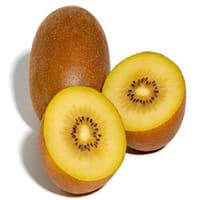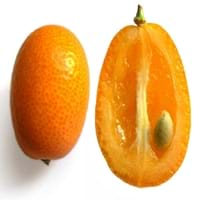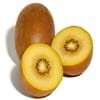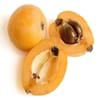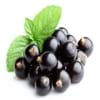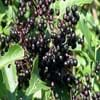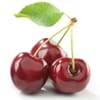Health Benefits
Asthma treatment, Heart care, Improves stomach health, Regulation of heart rate, Treatment of skin Diseases
Cancer prevention, Cures gastro-intestinal troubles, Heart care, Increase in haemoglobin, Increases metabolic rate
General Benefits
Boosts immune system, Controls blood pressure, Eye care, Helps in weight loss
Anti oxidant properties, Anti-inflammatory properties, Healing of wounds, Helps in weight loss, Strengthens bones
Skin Benefits
Brightens and lightens complexion, Heals sunburn, Reduces wrinkles, Skin rejuvenation, Treatment of acne, Treatment of dark spots, Treatment of skin diseases
Anti-aging benefits, Reduces wrinkles, Treatment of dark spots
Hair Benefits
Prevents hair loss, Promotes longer and healthier hair, Treatment of dandruff
Promotes longer and healthier hair, Protects hair, Shiny hair
Allergy Symptoms
Abdominal pains, Anaphylaxis, Breathing difficulty, Itching in tongue and other parts of mouth, Itching sensation in throat, Swelling of mouth, tongue or lips, Vomiting
Abdominal pains, Coughing, Diarrhea, Digestive Problems, Drop in blood pressure, Hives, Itching, Nausea, Tingling sensation in wrist and face, Vomiting, Wheezing
Side Effects
Allergic reaction, Diarrhoea, Skin rash, Possibly unsafe during pregnancy
Allergic reaction
Best Time to Eat
Any time except an hour after meal
As a snack in the late afternoon, Don't consume at night and before bed, Eat the fresh ones, avoid mixing with any other foods, don't eat after meal., Morning time (before lunch), Strictly avoid empty stomach
Vitamin B5 (Pantothenic Acid)
Vitamin C (Ascorbic Acid)
Vitamin K (Phyllochinone)
Calories in Fresh Fruit with Peel
Calories in Fresh Fruit without Peel
Not Available
Not Available
Calories in Frozen Form
Not Available
Not Available
Calories in Dried Form
Not Available
Calories in Canned Form
Not Available
Season
Spring, Summer, Winter
Autumn, Winter
Varieties
Qing Yuan #27, Qing Yuan #29, Qing Yuan #6 and Huang Yan
Hong Kong, Marumi, Meiwa, Centenniel and Nagami
Color
Brown, Yellow
Orange, Red, Yellow
Inside Color
Yellow
Orange
Soil Type
Well-drained
Clay, Sandy loam, Well-drained
Climatic Conditions
Cold, Sunny
Cold, Warm
Facts about
- The name Kiwi is due to its resemblance with 'Kiwi' bird.
- This variety of Kiwi was developed by New Zealand, it is not fuzzy on the outside and it has a taste reminiscent of the mango fruit.
- The entire kumquat fruit is edible, except few seeds.
- The taste of kumquat skin is sweet while inner flesh is tart.
- There are some hybrid varieties of kumquats such as mandarinquats, orangequats and limequats.
Other Countries
Chile, France, Greece, Iran, Japan, New Zealand, Portugal, Turkey, United States of America
Brazil, Mexico, Spain, United States of America
Top Importer
United States of America
United Kingdom
Top Exporter
New Zealand
China
Botanical Name
Actinidia chinensis
Citrus japonica
Synonym
Not Available
Fortunella margarita
Subkingdom
Tracheobionta
Tracheobionta
Division
Magnoliophyta
Magnoliophyta
Class
Magnoliopsida
Magnoliopsida
Subclass
Dillenhidae
Rosidae
Order
Ericales
Sapindales
Family
Actinidiaceae
Rutaceae
Species
A. chinensis
C. japonica
Generic Group
Kiwi
Citrus fruit
Difference Between Gold Kiwi and Kumquat
We might think that Gold Kiwi and Kumquat are similar with respect to nutritional value and health benefits. But the nutrient content of both fruits is different. Gold Kiwi and Kumquat Facts such as their taste, shape, color, and size are also distinct. The difference between Gold Kiwi and Kumquat is explained here.
The amount of calories in 100 gm of fresh Gold Kiwi and Kumquat with peel is 60.00 kcal and 71.00 kcal and the amount of calories without peel is Not Available and Not Available respectively. Thus, Gold Kiwi and Kumquat belong to Low Calorie Fruits and Low Calorie Fruits category.These fruits might or might not differ with respect to their scientific classification. The order of Gold Kiwi and Kumquat is Ericales and Sapindales respectively. Gold Kiwi belongs to Actinidiaceae family and Kumquat belongs to Rutaceae family. Gold Kiwi belongs to Actinidia genus of A. chinensis species and Kumquat belongs to Citrus genus of C. japonica species. Beings plants, both fruits belong to Plantae Kingdom.
